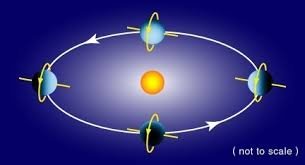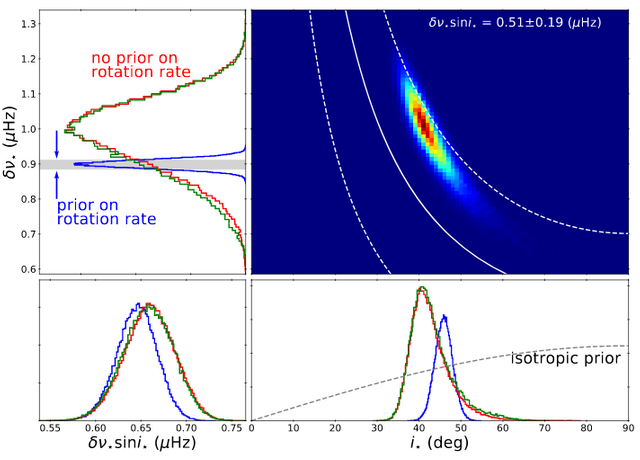Tilted Exoplanets
On Earth, our seasons are caused by the 23.5 tilt in our axis relative to our orbit around the sun. Elsewhere in our solar system, the planet Uranus is well known to have a significant tilt in its axis of rotation relative to its orbit around the sun (See Figure 1). However, it is even possible for astronomers to determine if exoplanets have such a massively misaligned orbit. In a recent submission to the Astronomical Journal, a team of astronomers investigated the case of exoplanet Kepler-408b. As a reminder, Kepler-408 refers to the host star while the 'b' designation (i.e., Kepler-408b) refers to the planet. The exoplanet Kepler-408b has a radius 0.86 the size of the Earth's radius and orbits its host star every 2.5 days making it a "hot earth" (i.e., an Earth-sized planet that orbits very close to its star). Kepler-408b was found to have a misaligned orbit with an inclination of about 42 degrees. This is interesting because it makes Kepler-408b the smallest known planet to have a significantly misaligned orbit by a long shot.

So how did they come to this result? As the name suggests, Kepler-408 is one of the many stars that was observed by Kepler over the course of its multi year mission. The planet Kepler-408b transits the star every 2.5 days. It is possible to determine the inclination of the stellar rotation axis from the spectrum of the pressure-mode (p-mode) pulsations. The inclination of the stellar rotation axis for transiting planets is typically close to 90 degrees. To find the inclination in this case, Kepler-408 spectrum data was obtained from the Kepler dataset. After refining the parameters of Kepler-408, they created a model to constrain the orbital inclination and found a best fit of around 42 degrees(See Figure 2). To date, this is the most extreme case of an Earth-sized planet with a significantly misaligned rotational inclination.

References
Kamiaka, S. et al. (2019), https://arxiv.org/pdf/1902.02057.pdf
This post has been voted on by the SteemSTEM curation team and voting trail in collaboration with @curie.
If you appreciate the work we are doing then consider voting both projects for witness by selecting stem.witness and curie!
For additional information please join us on the SteemSTEM discord and to get to know the rest of the community!
✅ Enjoy the vote! For more amazing content, please follow @themadcurator for a chance to receive more free votes!